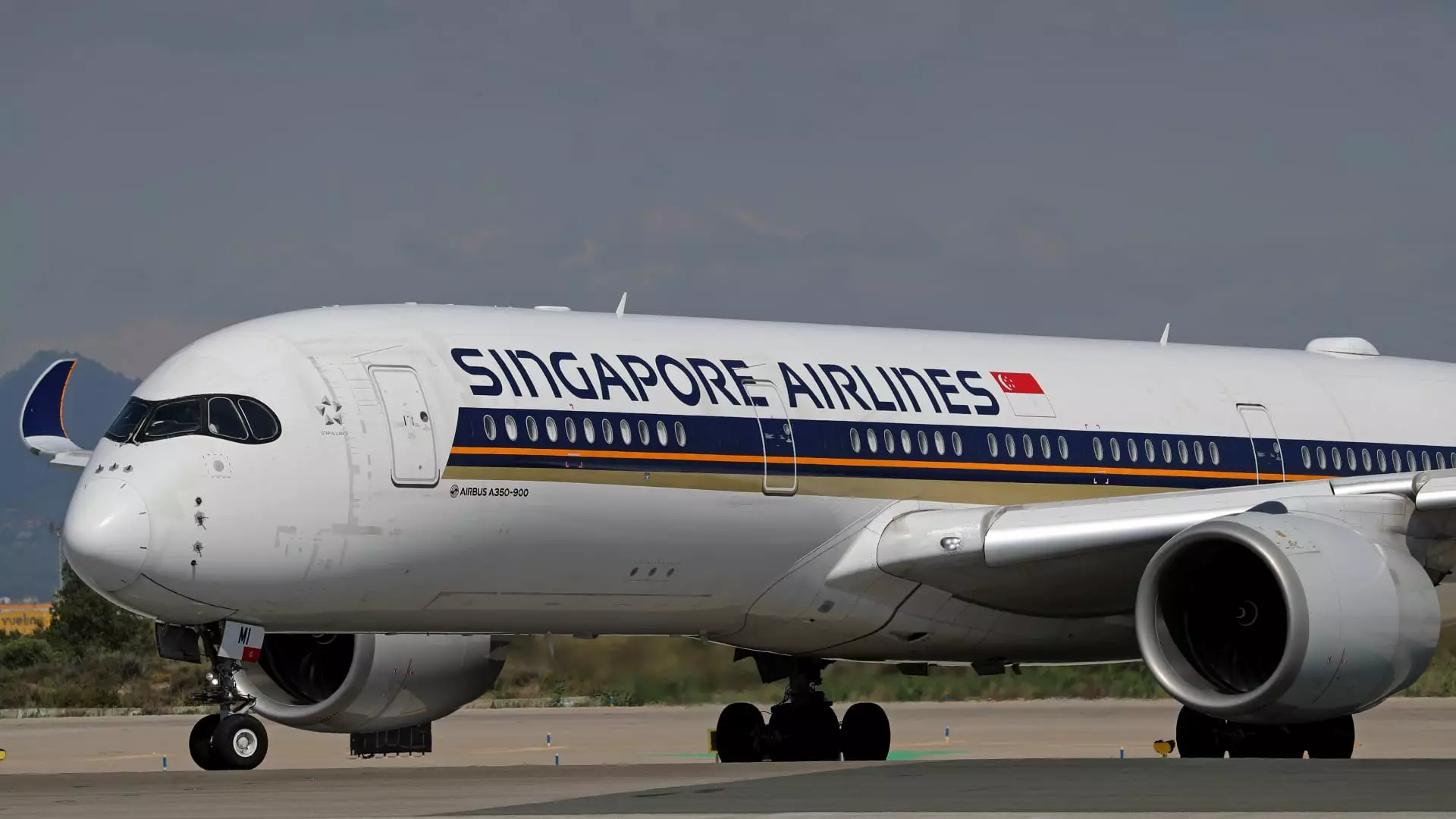Singapore Airlines recently reported a significant drop in its net profit for the first half of the fiscal year, leading to a rocky start for its shares in the stock market. The airline’s profits plummeted nearly 50%, recording a net profit of just 742 million Singapore dollars (approximately $559 million) for the April to September period, down from SG$1.44 billion in the same timeframe last year. This sharp decline prompted a decrease in share prices of up to 6.2% shortly after the markets opened on Monday, though they rebounded slightly to close down 3.57%.
Despite the alarming profit drop, Singapore Airlines did witness a 3.7% increase in revenue, which reached SG$9.5 billion. However, operating profits also saw a striking drop of almost 49%, falling to SG$796 million from SG$1.55 billion the previous year. This dissonance between revenue growth and profit decline can primarily be attributed to factors like increased market capacity and escalating competition, which ultimately translated into lowered profit margins.
The heightened market competition was acknowledged by the airline’s Chief Commercial Officer, Lee Lik Hsin, who noted that many airlines are regaining their pre-pandemic capacities. In conjunction, SIA CEO Goh Choon Phong highlighted that the restoration of capacity is exerting additional pressure on yields as passenger demand struggles to meet the rapid capacity growth. Although passenger traffic saw a yearly increase of 7.9%, it lagged behind the 11% expansion in passenger capacity, resulting in a decline in the passenger load factor by 2.4% to 86.4%.
Despite these challenges, Singapore Airlines remains optimistic about future demand for air travel, projecting a strong second-half performance amidst ongoing market competitiveness. In a strategic move to enhance its service offerings, the airline recently announced a significant investment of SG$1.1 billion into a cabin retrofit program for its fleet of 41 long-range and ultra-long-range Airbus A350 jets. The first of these retrofitted aircraft is slated to enter service by 2026, with the entire upgrade expected to be completed by 2030. This endeavor demonstrates SIA’s commitment to broadening its appeal in a competitive landscape while simultaneously improving the passenger experience.
In light of the reduced profits, the airline has opted to maintain its interim dividend at 10 Singapore cents per share, a decision likely made to reassure investors about the company’s long-term viability and stability amidst short-term challenges. This strategic choice signifies a balance between shareholder returns and the need to navigate the current competitive environment effectively.
Singapore Airlines is experiencing a tumultuous period marked by significant profit declines and intense competition. Nevertheless, through strategic investments and a commitment to capacity growth, the airline is positioning itself to recover and thrive in the evolving aviation landscape.

Leave a Reply